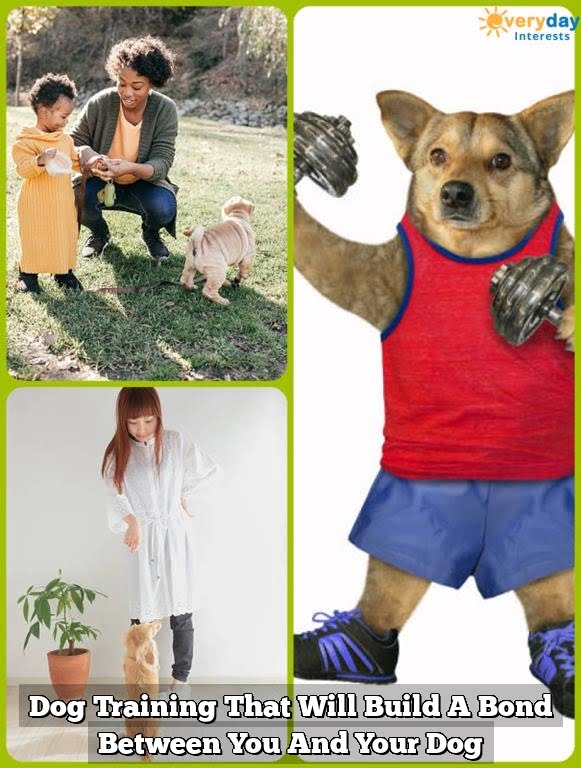Are you interested in learning how to train your dog to go between your legs? Training your furry friend to perform this impressive trick not only provides mental stimulation and enrichment for your pet but also enhances the bond between you and your dog. In this article, we will explore the benefits of teaching your dog to go between your legs and provide a comprehensive guide on how to successfully train them to do so.
Training your dog to go between your legs offers numerous benefits for both you and your furry companion. Not only does it provide mental stimulation and physical exercise for your dog, but it also strengthens the bond between you and your pet. Additionally, mastering this skill can help improve communication and trust between you and your furry friend.
Before diving into the training process, it’s important to choose the right method for teaching your dog how to go between your legs. Positive reinforcement and clicker training are two popular approaches that can be effective in teaching this trick.
In addition, creating a suitable training environment and using the right tools are crucial steps in preparing for the training process. By following our step-by-step guide, you can establish clear communication with your dog and successfully teach them the command to go between or through your legs.
Choosing the Right Training Method
Understanding Positive Reinforcement
Positive reinforcement is a widely recommended training method for teaching your dog new commands and tricks. This approach involves rewarding your dog with treats, praise, or toys when they exhibit the desired behavior. By using positive reinforcement, you are encouraging your dog to repeat the behavior in order to receive the positive reward. This method is effective in building a strong bond with your dog and can lead to long-lasting results.
Exploring Clicker Training
Clicker training is another popular method for teaching dogs new behaviors. This technique involves using a small handheld device called a clicker to signal to your dog that they have performed the desired behavior. The clicker serves as a clear and consistent marker for your dog, helping them understand exactly what behavior they are being rewarded for. Clicker training can be an effective way to communicate with your dog and can lead to quick learning and understanding of commands.
Choosing the Right Method for Your Dog
When deciding between positive reinforcement and clicker training, it’s important to consider your dog’s individual personality and learning style. Some dogs may respond better to one method over the other, so it’s important to observe how your dog reacts to different forms of training.
It may also be beneficial to consult with a professional trainer or behaviorist who can provide insight into which method may be best suited for your specific dog. Ultimately, the key is to choose the method that helps create a positive and enjoyable experience for both you and your furry companion while learning how to train your dog to go between your legs.
Preparing for Training
Training your dog to go between your legs can be a fun and engaging activity that also promotes bonding and trust. However, before you begin this training, it’s important to ensure that you have the right environment and tools in place. Creating a positive and safe space for training will set both you and your dog up for success.
First and foremost, make sure that you are in an area with enough space for your dog to move comfortably between your legs. A spacious living room or backyard can be ideal for this type of training. Additionally, it’s important to remove any potential hazards or obstacles from the training area to prevent any accidents or distractions.
In terms of tools, having a leash and collar on your dog can provide you with additional control during the training process. Treats can also be valuable rewards for reinforcing the behavior as you progress through the training. Using high-value treats that your dog loves will help keep them engaged and motivated to learn.
Finally, consider the time of day when you plan to train. Dogs are often more attentive and receptive when they are not too tired or overstimulated. Finding a time when your dog is relaxed but alert can make the training process more effective. By ensuring the right environment and tools are in place, you can set the stage for successful training sessions and create a positive experience for both you and your furry companion.
| Preparing Tools | Ensuring Environment |
|---|---|
| Leash | Spacious area |
| Treats | Remove hazards |
| Collar | Right time of day |
Building a Strong Bond
Understanding the Importance of Trust and Communication
Building a strong bond with your dog is essential for successful training. Trust and communication are the key factors in creating a harmonious relationship between you and your furry friend. When your dog trusts you, they are more likely to be receptive to training and learning new commands. Effective communication, on the other hand, ensures that your dog understands what you are asking of them.
Establishing Trust Through Positive Reinforcement
One of the best ways to build trust with your dog is through positive reinforcement. This involves rewarding your dog for good behavior with treats, praise, or playtime. When your dog associates following your commands with positive outcomes, they will be more motivated to continue obeying you. By consistently rewarding good behavior, you can strengthen the bond of trust between you and your pet.
Developing Clear Communication Channels
Clear communication is also crucial in building a strong bond with your dog. Use consistent verbal cues, body language, and tone of voice to convey what you expect from your pet. For example, when teaching the “between” or “through” command, use a specific word or hand signal that your dog can easily understand. By being clear and consistent in your communication, you can foster mutual understanding and trust with your furry companion.
By establishing trust and clear communication with your dog, you set the foundation for successful training sessions. These elements form the basis for a strong bond that will not only enhance training but also enriches the overall relationship between you and your beloved pet.
Teaching the Command
Training your dog to go between your legs can be a fun and rewarding experience for both you and your furry friend. This trick not only strengthens the bond between you and your dog but also provides mental stimulation and physical activity. Before starting the training, it’s important to understand that every dog is different, so patience and consistency are key.
To start training your dog to go between your legs, it’s essential to choose the right method of training. Positive reinforcement, such as using treats or verbal praise, can be an effective way to encourage the behavior. Another option is clicker training, which uses a clicking sound to mark the desired behavior and then rewards the dog. Whichever method you choose, make sure it aligns with your dog’s personality and interests.
Before beginning the training process, ensure that you have a suitable environment and tools in place. Choose an area with enough space for both you and your dog to move around comfortably.
It’s also helpful to have some treats on hand as a reward for when your pup successfully completes the command. With the right environment and tools in place, you can begin building a strong bond with your dog through trust and communication as you start teaching them how to go between your legs.
Troubleshooting
Training your dog to go between your legs can be a fun and engaging experience for both you and your furry friend. However, like any training process, there can be common challenges and missteps along the way. It’s important to address these challenges with patience and understanding in order to successfully teach this trick to your dog.
One common challenge when training your dog to go between your legs is fear or hesitation. Some dogs may feel unsure about going between their owner’s legs, especially if they are not used to this type of interaction. To address this, it’s essential to create a positive and encouraging environment during training. Use treats, toys, and plenty of praise to help your dog feel comfortable and confident as they learn the command.
Another challenge that may arise when teaching your dog to go between your legs is distraction. Dogs are naturally curious animals, so they may become distracted by other sights, sounds, or smells in their environment. To combat this challenge, choose a quiet and familiar space for training sessions. Minimize distractions as much as possible and gradually introduce more stimulating environments as your dog becomes more confident in performing the trick.
Lastly, be mindful of any physical limitations or discomfort that your dog may experience during training. If your dog is hesitant or appears uncomfortable when going between your legs, take a step back and assess the situation. Ensure that there are no physical barriers preventing them from comfortably maneuvering between your legs and consult with a veterinarian if you have any concerns about their mobility or comfort level.
Troubleshooting: Addressing Common Challenges and Missteps in Training
| Common Challenge | How to Address |
|---|---|
| Fear or Hesitation | Create a positive environment with treats, toys, and praise |
| Distraction | Choose a quiet space for training sessions; minimize distractions |
| Physical Limitations/Discomfort | Assess the situation; ensure no physical barriers; consult with a vet if necessary |
Reinforcing the Behavior
Once your dog has started to understand the command to go between your legs, it’s important to reinforce this behavior through consistency and patience in practice. Dogs, like humans, thrive on routine and repetition, so it’s important to make sure you are consistently practicing the command with your dog. Set aside dedicated time each day to work on this skill with your furry friend.
Consistency also means using the same command and hand signal each time you want your dog to go between your legs. This will help your dog understand what is expected of them and make it easier for them to follow through with the behavior. Remember that dogs respond well to clear communication and consistency, so be sure to stick with the same method each time you practice.
Patience is key when reinforcing this behavior. Just like any other training, some dogs may pick up the command quickly while others may take more time. It’s essential to remain patient and positive during these training sessions.
If your dog becomes frustrated or confused, take a step back and reassess your approach. Training should always be a positive experience for both you and your dog, so patience is crucial in helping them learn how to go between your legs effectively.
In addition, remember to celebrate small victories during practice sessions. Whether it’s a successful run-through of the command or even just a step in the right direction, be sure to praise and reward your dog for their efforts. Positive reinforcement goes a long way in reinforcing good behavior, so make sure to show appreciation for their progress as they continue to master going between your legs.
Taking It to the Next Level
After successfully training your dog to go between your legs, you may be wondering what other tricks and commands you can teach them. Taking your training to the next level can be both fun and rewarding for both you and your furry friend. Here are some advanced tricks and commands to try after mastering the “between your legs” trick:
1. Spin in a Circle: Teaching your dog to spin in a circle is a great way to further engage their mind and body. Start by using a treat to lure them in a circle, gradually adding the verbal command “spin” as they get the hang of it. Be sure to use positive reinforcement and plenty of praise as they learn this new trick.
2. Play Dead: This classic trick is not only impressive, but it’s also a lot of fun for both you and your dog. To teach your dog to play dead, start by having them lie down on command. Then, gently guide them onto their side while saying “play dead.” Again, using treats and positive reinforcement will help them understand what is being asked of them.
3. High Five: Teaching your dog to give you a high five is not only adorable, but it’s also a great way to further strengthen the bond between you. Start by holding a treat in front of your dog’s nose and raising it slightly higher each time until they lift their paw off the ground. Add the verbal command “high five” as they start to make contact with their paw.
These are just a few examples of advanced tricks and commands that you can try with your dog once they have mastered going between your legs. Remember, patience, consistency, and positive reinforcement are key when teaching any new trick or command to your furry companion.
Conclusion
In conclusion, training your dog to go between your legs can be a fun and rewarding experience for both you and your furry friend. By building a strong bond and establishing trust and communication, you can successfully teach this impressive trick, creating a deeper connection with your pet. Choosing the right training method, whether it’s positive reinforcement or clicker training, and ensuring the right environment and tools are essential steps in preparing for successful training sessions.
As you celebrate the success of teaching your dog to go between your legs, remember to continue reinforcing the behavior with consistency and patience. Address any common challenges or missteps that may arise during the training process, as troubleshooting is an important part of the learning journey. Once your dog has mastered going between your legs, consider taking it to the next level by exploring advanced tricks and commands.
Ultimately, training your dog to go between your legs not only showcases their intelligence and agility but also strengthens the bond between you. It offers mental stimulation for them and creates a sense of accomplishment for both you and your pet. So, take joy in the benefits of this training as you witness the impressive results of your efforts.
Frequently Asked Questions
What Is It Called When You Train Your Dog to Sit Between Your Legs?
When you train your dog to sit between your legs, it is often referred to as the “between the legs” command or position. This training can help with maintaining proximity and control while walking or in crowded spaces.
How Do You Train a Dog to Weave Your Legs?
Training a dog to weave through your legs involves teaching them to move in a figure-eight pattern around and between your legs. This typically requires using treats or toys as incentives, along with patience and consistent practice to reinforce the behavior.
What Does It Mean When Your Dog Goes Between Your Legs?
When a dog goes between your legs, it can be a sign of seeking comfort, security, or protection. Some dogs may also do this as a playful or attention-seeking behavior. It’s important to interpret their body language and context to understand the specific reason for their action.

Welcome to the blog! I am a professional dog trainer and have been working with dogs for many years. In this blog, I will be discussing various topics related to dog training, including tips, tricks, and advice. I hope you find this information helpful and informative. Thanks for reading!





